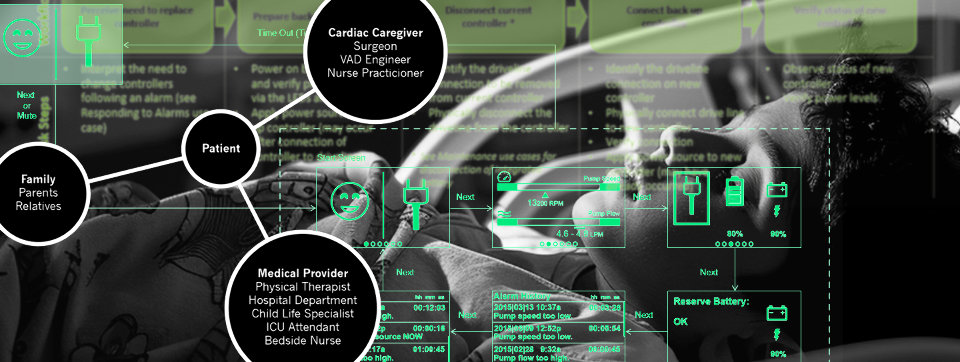
A pediatric VAD, otherwise known as a heart pump, that is implanted in infants and small children who are waiting for a transplant or for their own hearts to heal is a tremendous leap forward for pediatric cardiac care. Currently, an adult VAD surgically attaches the child to a large machine that assists the beating of their heart. Movement is difficult, if not impossible, so these children may be sedated for much of the day. Parent and caregiver interactions with the child are awkward and fraught with anxiety. A pediatric heart pump changes this, allowing the child to be a child, not just a patient.
But with new technology comes new challenges. An adult implanted with a heart pump is easily able to carry the pump's controller and batteries to power it - things that must be connected to the pump at all times - and to manage the driveline and cabling connecting everything together. A small child is incapable of carrying or managing these and likely will not even understand their importance. We were asked to conceptualize external management systems for use with a pediatric heart pump that would enable management and control of the external components and cabling, while still encouraging and supporting patient-caregiver and patient-parent interactions. We first conducted a comprehensive review of adult VADs and management systems and the pediatric use of similar medical devices. We interviewed experts in pediatric cardiac care, carefully studied the interactions of caregivers and their patients, and toured pediatric cardiac care facilities to gain insight into the needs and wants of caregivers as they relate to managing the heart pump components. We distilled this information and crafted personas and use scenarios. Personas describe and illustrate the involved people, whereas use scenarios describe the situations of use. Identified personas for the heart pump included the patient, family members, and medical and cardiac caregivers, whereas use scenarios centered on medical care activities, maintenance of the device, and activities related to living a normal life, all of which affect the physical well-being of the patient and the mental well-being of the patient and caregivers. Brainstorming sessions with our industrial design team synthesized this information and conceptualized and explored possible management systems. Many concepts were generated and evaluated against human factors guidelines and performance criteria also derived from our research. Key concepts were identified and refined. They are now in the process of being further developed so that they may be taken to stakeholders and refined into functional, useful, elegant management systems.